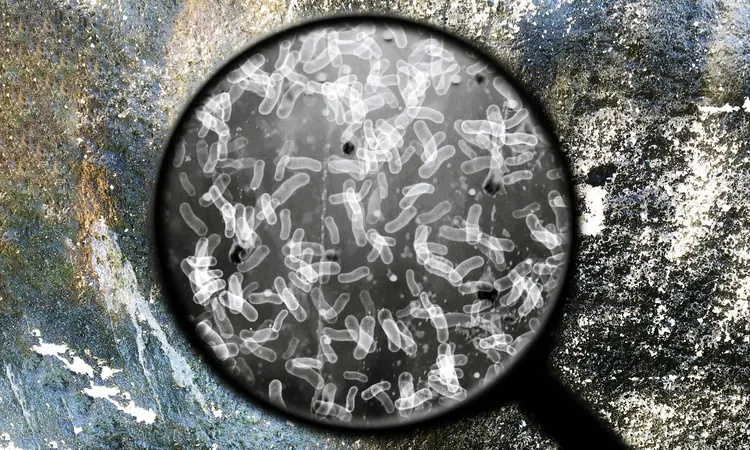
Earth's Hidden Microbial World: 50% of Life Lurks Beneath Our Feet!
2024-12-20
Author: Rajesh
Deep beneath the surface of our planet lies a secret ecosystem bustling with a diverse range of microbial life.
These resilient microorganisms thrive in extreme environments, from deep gold mines to remote aquifers and the dark expanses of the ocean floor, all unseen by the naked eye.
A Groundbreaking Investigation into Subsurface Microbes
In a pioneering study by researchers at the Marine Biological Laboratory (MBL), scientists have made remarkable discoveries about the microbial populations that inhabit our planet's subsurface realms.
Their research has identified a staggering variety of microbial life extending as deep as 491 meters (1,610 feet) below the seafloor and an incredible 4,375 meters (14,300 feet) below ground level.
The implications of these findings are vast, suggesting that up to 80% of Earth's microbial cells might reside underground, challenging long-held beliefs about biodiversity and energy availability in subterranean environments.
Emil Ruff, the lead scientist of the study, emphasizes that while it is traditionally thought that less energy leads to fewer organisms, this study reveals that microbial diversity below the surface can rival or even exceed that found in sunlit habitats like tropical rainforests and coral reefs.
Marine vs. Terrestrial Microbial Diversity
Completed after nearly a decade of research, this study also provides a comprehensive comparison of microbial communities in marine and terrestrial settings.
While certain similarities exist in diversity levels, the composition of species shows a stark divide between the ocean and land.
Ruff notes, "Different selective pressures in the marine and terrestrial realms lead to distinct life forms that are adapted to their unique environments."
The Slow Life of Subsurface Microbes
Intriguingly, the study reveals that many microbes in these low-energy zones have extraordinarily slow life cycles, with some estimated to divide only once every millennium.
This slow pace of life opens up fascinating questions about microbial aging and adaptation in conditions where energy is scarce.
What This Means for Extraterrestrial Life Research
The study's revelations have implications that stretch beyond Earth.
If celestial bodies like Mars once had the right conditions for liquid water, their underground ecosystems could potentially mirror those found on our planet.
Ruff argues that understanding these subterranean life forms is crucial, as they could serve as a model for finding surviving life on Mars and similar planets.
Advancements in Microbial Research Methodologies
While previous research on microbial life often struggled with inconsistent methodologies, a breakthrough in 2016 permitted a standardized approach that allowed scientists to analyze over 1,000 samples from varied ecosystems.
This new method provides a cohesive dataset enabling direct comparisons across different microbial communities.
Conclusion
The research underscores the remarkable complexity and resilience of life that exists unseen beneath our feet.
As we delve deeper into these hidden worlds, we could glean invaluable insights not only about Earth's biodiversity but also about the fundamental principles of life itself.
The full findings were published in the esteemed journal *Science Advances*, setting the stage for future discoveries that could redefine our understanding of life on Earth and perhaps even elsewhere in the universe.
Stay tuned for more riveting updates as we continue to explore the enchanting, yet enigmatic, microbial universe hidden beneath the Earth's surface!

 Brasil (PT)
Brasil (PT)
 Canada (EN)
Canada (EN)
 Chile (ES)
Chile (ES)
 España (ES)
España (ES)
 France (FR)
France (FR)
 Hong Kong (EN)
Hong Kong (EN)
 Italia (IT)
Italia (IT)
 日本 (JA)
日本 (JA)
 Magyarország (HU)
Magyarország (HU)
 Norge (NO)
Norge (NO)
 Polska (PL)
Polska (PL)
 Schweiz (DE)
Schweiz (DE)
 Singapore (EN)
Singapore (EN)
 Sverige (SV)
Sverige (SV)
 Suomi (FI)
Suomi (FI)
 Türkiye (TR)
Türkiye (TR)